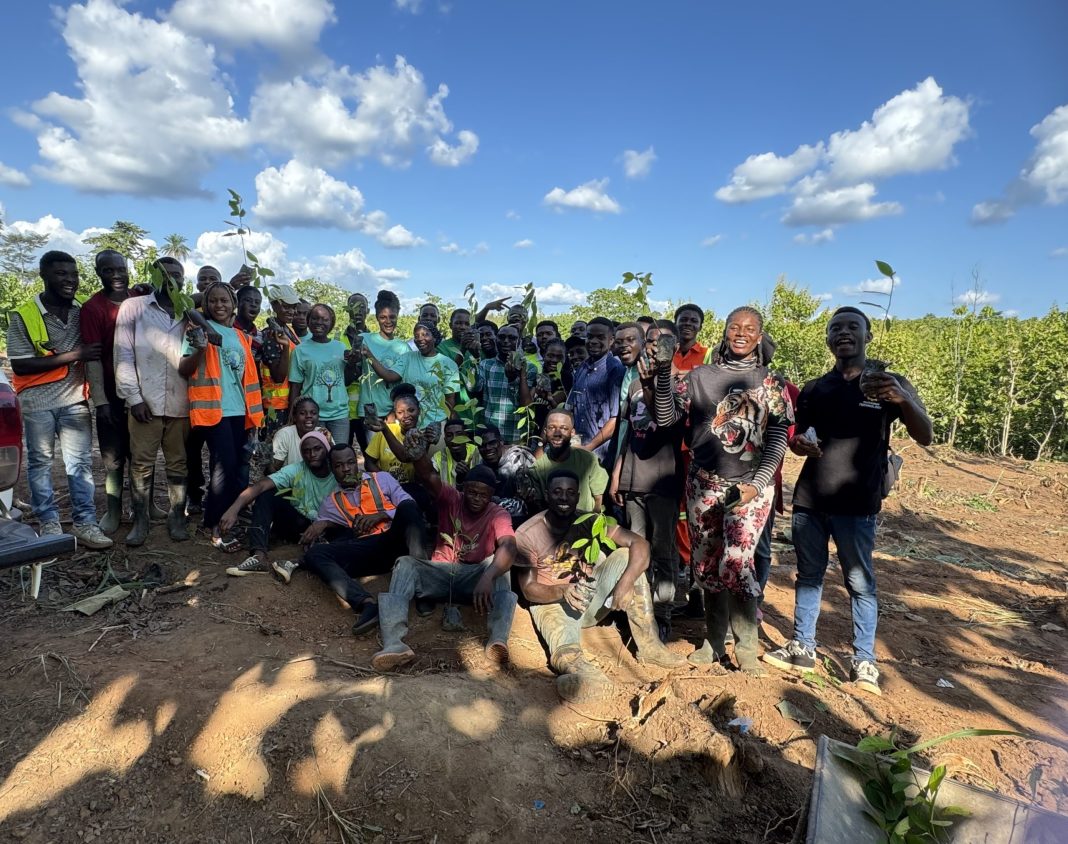By Florence Afriyie Mensah
Sewia-Fante (Ash), June 9, GNA – The Institute of Nature and Environmental Conservation (INEC) Ghana, as part of national efforts to improve afforestation and promote sustainable forest management, has planted native tree species to mark the launch of the “Tree for Life Restoration Initiative.”
The exercise took place in the Mankrang Forest Reserve where portions of the reserve have suffered considerable levels of degradation.
The Reserve, located within the Offinso Forest District and shares boundary with Bono Region, is a semi-dry deciduous forest where rainfall precipitation is very different from wet evergreen forest.
Seedlings planted included Tetrapleura tetraptera (Prekese), Ceiba pentandra (Onyina), Terminalia superba (Ofram), Terminalia ivorensis (Emere) and Mahogany.
The planting exercise was jointly undertaken by staff of INEC-Ghana and some students from the Kwame Nkrumah University of Science and Technology (KNUST).
It was on the theme: “Restoring Degraded Landscapes.”
Mr. David Kwarteng, Executive Director, INEC-Ghana, leading the planting of about 3,000 seedlings at Sewia-Fante, emphasized that as an organization whose main mission was rooted in nature conservation, they needed to give a chance to very native species that otherwise could not compete with its invasive counterparts.
He said it was imperative for Ghana to make conscious efforts in protecting biodiversity, adding that the next generation may not meet any other of the native species if attempts in reestablishing degraded ecosystems failed.
Mr. Kwarteng explained that the African Union through the African Forest Restoration Initiative (AFR 100) was to restore 30 million hectares of lands across Africa by 2030.
Ghana is expected to restore two million hectares towards the AFR 100.
The Executive Director indicated that INEC-Ghana was working through the Forestry Commission to restock 240 hectares of the degraded Mankrang Forest Reserve as part of the AFR 100 broader goals.
Mr. Kwarteng mentioned that the different species planted would interact with each other and contribute to climate change mitigation.
He also revealed that INEC was planting huge volumes of “Onyina” seedlings in Mankrang Forest to trap carbon and mitigate global warming, which could consequently counteract the greenhouse effects.
GNA
Edited by Yussif Ibrahim and Lydia Kukua Asamoah
